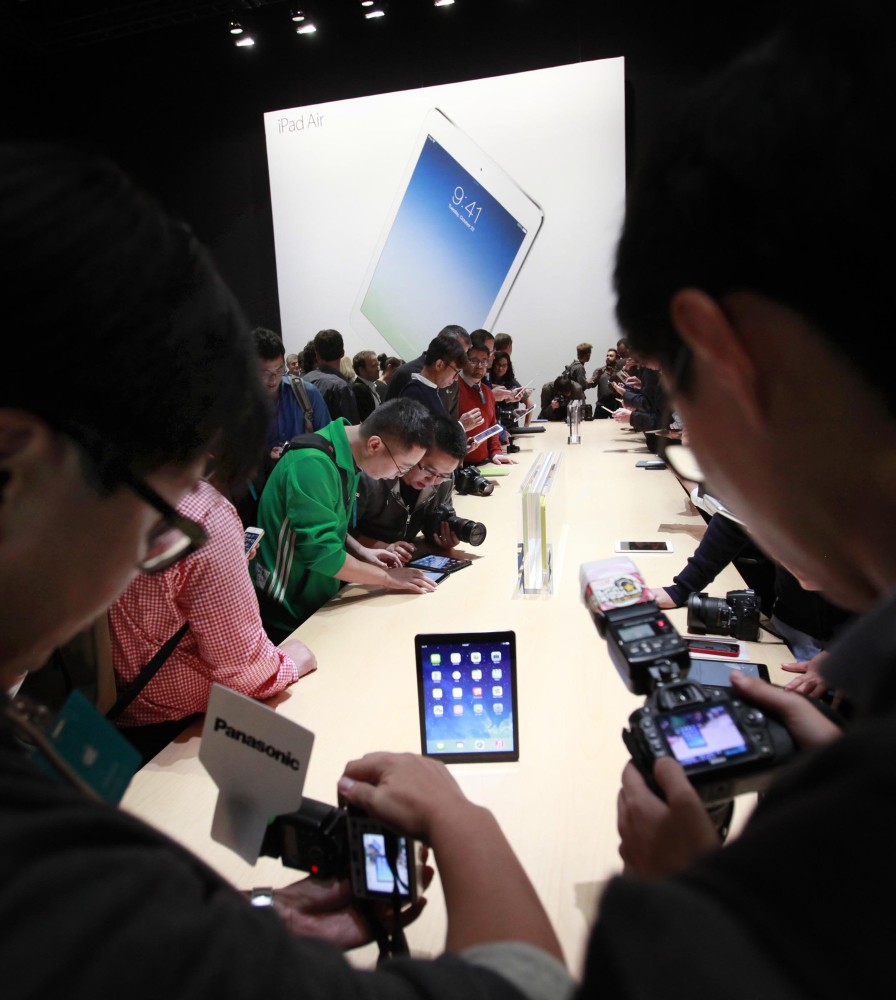By Katy Bergen
The Kansas City Star
WWR Article Summary (tl;dr) Parents in one Kansas City school district are sharing concerns that administrators have not equipped parents with the tools to monitor screen content or device usage.
SHAWNEE, Kan.
Five years ago, the Shawnee Mission School District gave iPads or laptops to every student as part of a lauded $20 million program.
Recently, more than a dozen parents publicly gave the district examples of how those devices weren’t such a good idea:
-A parent who doesn’t allow her young children to have technology devices, but has little recourse to opt out of the program.
-High school students who use school-issued laptops to watch movies, chat with their friends or cheat on tests during class.
-An elementary school boy who sees an “explicit” photograph of Kim Kardashian while using the CNN app on his classroom iPad.
In 2014, Shawnee Mission implemented the 1:1 program as districts across the country embraced technology as an innovative way to personalize learning and prepare students for the modern workforce.
At a recent school board meeting, parents implored the district to form an advisory board to review the program, which they said needs stronger guidelines, improved monitoring systems and continued research on its long-term impact on child development.
The informally organized parent group had made plans to address elected officials at a public meeting after meeting privately with board members and administrators about concerns earlier this month.
At the school board meeting, they learned Superintendent Michael Fulton had already approved plans to form a technology advisory board that would “inform both current and future practice for the use of digital tools.”
He said the board would convene this winter and submit recommendations by June.
“We want to make sure that we are using tools in ways that are appropriate,” Fulton told parents.
Parent Gretchen Shanahan, who has third-grade twins in the district, told The Kansas City Star that she and other parents shared their concerns publicly so that issues could be addressed “districtwide and not put on the shoulders of teachers and principals.”
Shanahan said her own concerns grew when she learned how often children played with their iPads during indoor recess. When she asked if the school tracked the hours kids were spending with their devices, the teacher didn’t know.
“They’ve been staring at a screen instead of doing what’s developmentally appropriate for them,” Shanahan told The Star.
Parent Christine Brush also echoed concerns about unmonitored time kids spend with devices, including on the bus, in the hallways, at lunch and after school.
“I’m concerned about the addictive nature of these little hits of screen time,” Brush told board members.
Other parents shared concerns that the district hasn’t equipped parents with tools to monitor content or usage, tracked how often and when technology is being used or enforced consistent or districtwide policies regarding technology use both in and out of the classroom.
Some spoke passionately about how tablets offer more distractions for a child with ADHD or subjected kids to social media concepts such as “likes” and “comments” at an early age.
The 1:1 technology program, instituted during former Superintendent Jim Hinson’s tenure, debuted in Shawnee Mission at the beginning of the 2014-15 school year.
In a letter sent to parents in January 2014, Hinson said the new initiative would “step up the district’s technology and embed technology in instruction in a way that will transform teaching and learning in the classroom.”
He announced that the program would give each student either MacBook Air laptops or iPads. Middle school and high school students received devices in the fall of 2014, while the technology program at elementary schools was phased in over two years.
The $20 million investment was paid for using capital outlay dollars, funds designated for construction, infrastructure and equipment costs.
The program was later showcased at the 2017 EdTech conference.
“We also wanted to personalize the learning opportunities for our students and really transform instruction, taking our opportunities for learning outside the four walls of the classroom,” Christy Ziegler, the district’s assistant superintendent for innovation and performance, said in an interview.
Fulton emphasized that the district’s devices should still be seen as an asset.
“They offer up the world of opportunity to our students 24/7 so that even students who may be limited in the resources that they have at home have an equal footing in the learning process with their peers at school,” he said.
But he said the district was open to addressing more “global” issues associated with the program.
Parents want to be part of shaping a “wiser” and “more intentional” approach, Shanahan said.
“The pendulum is swinging,” Shanahan said. “People are trying to find ways to incorporate technology more wisely and not let it consume us.”














































































































































































































































































































































































